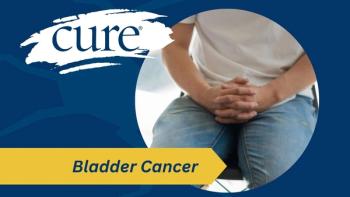
- CURE Winter 2024
- Volume 23
- Issue 4
How to Get the Most from Patient Portals During a Cancer Journey
Key Takeaways
- Electronic patient portals provide secure access to health information but require technological proficiency and appropriate devices for effective use.
- Portals are useful for non-urgent communication and document exchange but unsuitable for urgent matters due to intermittent monitoring.
An expert advises a few things to keep in mind when patients with cancer are navigating these platforms.
For both patients and providers, an electronic patient portal can be an incredibly helpful tool during a cancer journey. However, patients need to understand the appropriate uses of these platforms, as an expert explained.
“The portal is a way for the patient to have access to their health information and access to the health care team,” explained Dr. Michael K. Wong, physician in chief at the Roswell Park Comprehensive Cancer Center in Buffalo, New York.
A portal’s online nature, however, requires both technological capability through a device such as a smartphone and the technical savvy to navigate tools such as two-factor authentication for security purposes.
“It uses web-based technology, and in order to use it, you have to have the ability to access the web and the ability to manage interactions with the device that you have,” Wong, a member of CURE’s advisory board, explained.
If that technological bar is too high for some patients, clinic staff can interact with them with more traditional means such as phone calls and paper documents, or the patients can enlist the help of family members, Wong said.
“A lot of younger folks, especially grandchildren, they’re looking for a way to help grandpa and grandma, right? They are,” Wong said. “They’re there to help them physically, but if you tell them, ‘Hey, can you help with doing a website?’ they’re like, ‘Absolutely, I got the task, I got this.’ It’s something, they jump to the task. And I’ve seen it over and over again where the young people say, ‘Oh, grandma, let me tell you how to do this,’ and it’s like, wow, they’re off to the races. It’s something [where] I’ve never seen an instance where a younger person who’s tech savvy hasn’t jumped to the opportunity to do this, and it’s a way to help.”
Once patients are able to access their portal, there are a few things to keep in mind, Wong advised.
Set Expectations
The patient portal, Wong said, “is a great way to sometimes send information back and forth. So, I’m a skin cancer doctor, and sometimes patients can send pictures, which is helpful. I remind them, if you send it through the portal, it’s compliant [with privacy laws] and secure within the [electronic medical records].”
If patients need documents such as letters or prescription refills, those can also be delivered through the portal.
However, the portal is not appropriate for all communication with the care team.
“If it’s [something] urgent and you’re really worried, that’s a phone call — don’t do the portal, because we don’t check it consistently. It’s only intermittently checked,” Wong said.
Laboratory Reports
Patients may see laboratory reports and test results before the doctor has had a chance to review them, Wong cautioned.
“They will sometimes see a scan report before I see the scan report because I stack them up and put them into my workflow, but they see it instantaneously,” Wong said. “And if you ever read a PET [or] CT scan report, sometimes it’s absolutely frightening … so I tell patients that if they have questions about it, either to wait until the appointment — which some people do, but … because it’s a couple of days, they’re all freaked out — or just message us and say, ‘I’m concerned about something.’”
Potential for Human Error
Electronic medical records, Wong said, are “fantastic,” but are not immune to errors.
“Electronics travel at the speed of light, so that means that information gets in at the speed of light, and mistakes get in at the speed of light,” Wong said. “So, if you notice something that’s not [correct] on your record, make note of it and tell us.”
Lack of 'Human Touch'
There is also a key element of in-person interactions that the patient portal can’t replace, Wong explained.
“The problem with the portal for physicians and for the medical staff is we can’t see you,” Wong said. “We don’t know how urgent something is, and we can’t read your emotion … and because of that, this typing things back and forth is an imperfect way of communicating. [It’s] good for organizational things, booking [lab work] and so forth, [but] not so great for things that really concern you. And that’s why, for me, the weak point is the [lack of ] human touch.”
For more news on cancer updates, research and education, don’t forget to
Articles in this issue
11 months ago
The ABCs of ADCs in Breast Cancer




